MEDIA
“Octopus Studios” STORYHIVE
![]()
“Beata Kacy and her Octopus Studios” at Telus Optik: 4:25 min segment
![]()
The Express on Shaw TV
The Express Shaw TV: http://www.youtube.com/watch?v=JQ9uI-xGppA
![]()
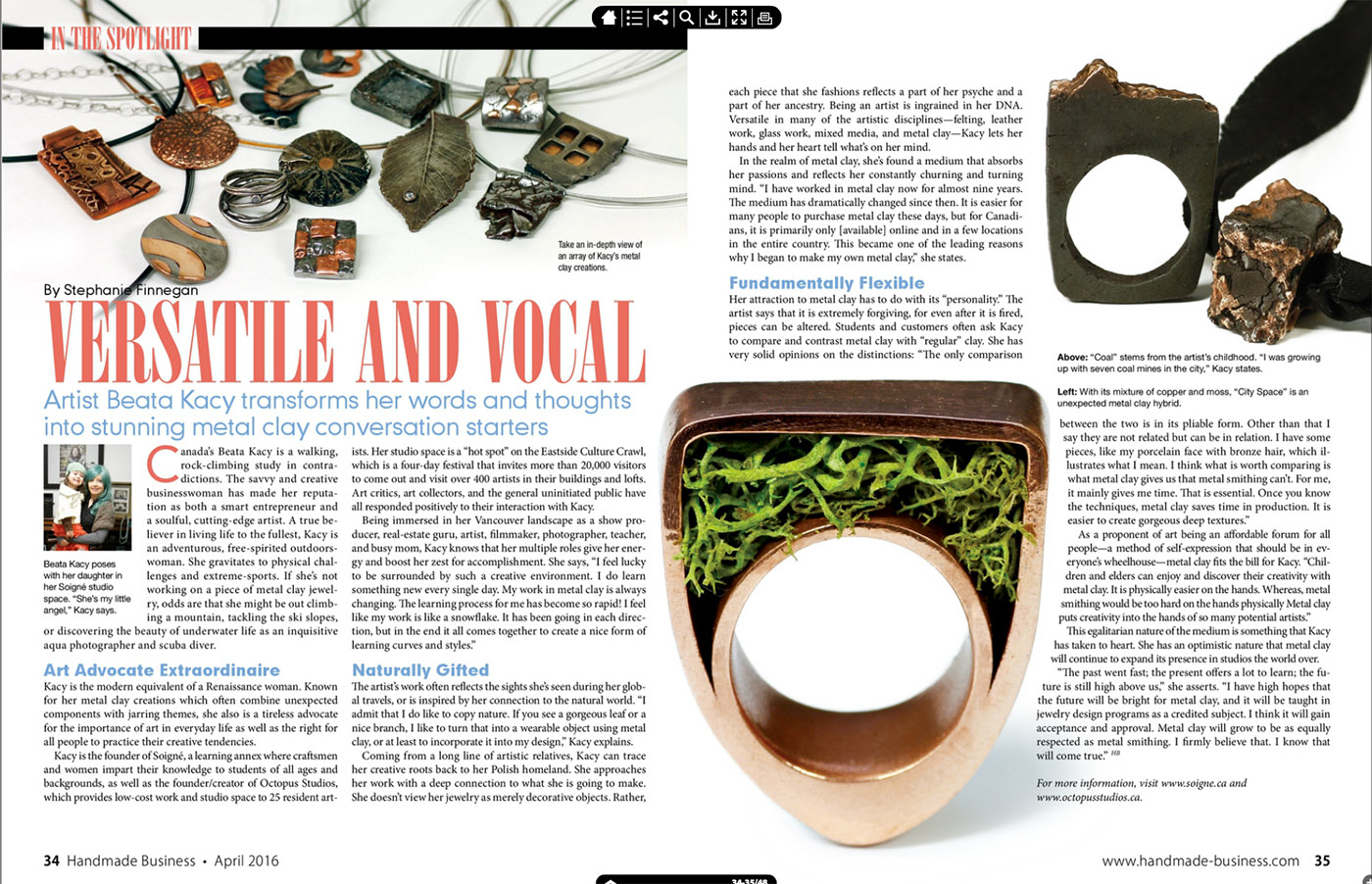
HANDMADE BUSINESS: http://viewer.zmags.com/publication/8d47ce2e#/8d47ce2e/34
HANDMADE Magazine, page 24: http://viewer.zmags.com/publication/36a6d828#/36a6d828/25
![]()
Britannia Art Gallery https://www.britanniaartgallery.org/luca-apel–beata-kacy.html
![]()
Britannia Art Gallery https://www.youtube.com/watch?v=CI-Fso12NoE
Britannia Art Gallery https://youtu.be/xFrULAHtVBM
![]()
Canadian Immigrants: http://canadianimmigrant.ca/entertainment/immigrant-artists-at-eastside-culture-crawl-nov-18-20/
![]()
Georgia Straight http://www.straight.com/article-540081/vancouver/space-invaders
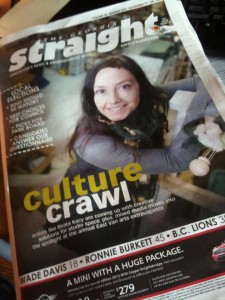
![]()
DARPAN MAGAZINE: http://www.darpanmagazine.com/events/festivals/experience-a-visual-treat-eastside-culture-crawl-2015/![]()
![]()
![]()
Eastside Culture Crawl – Beata Kacy artist of the day
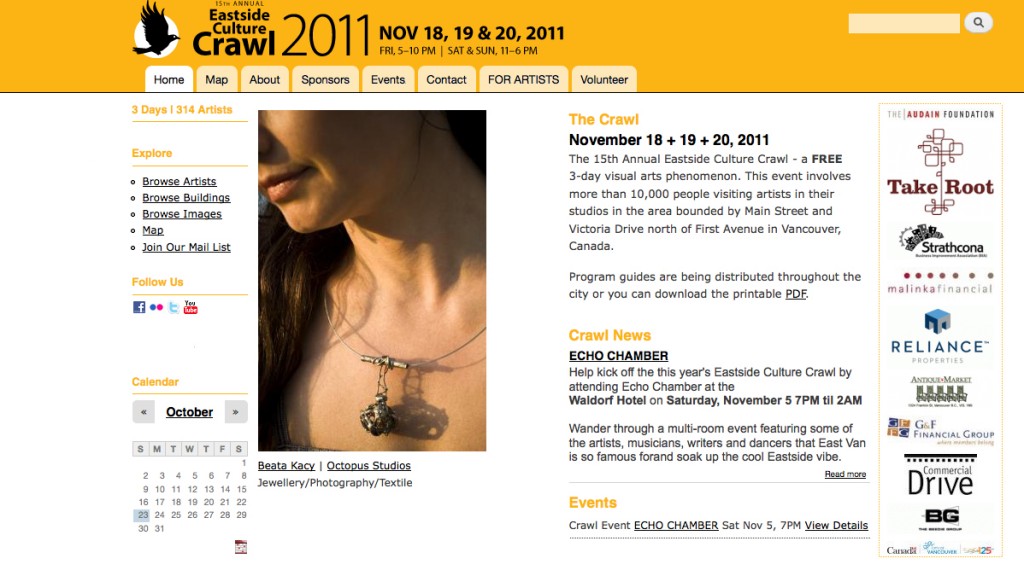
Vancouver Artists & the Business of Art
By: Kristin Ramsey
“To all viewers…what matters is the product: the finished artwork. To [the artist], what matters is the process: the experience of shaping that artwork.
David Bayles and Ted Orland, Art & Fear
These are the elements of an artist’s life we do not regularly see: the creative sparks, hours of detailed composition, negotiations with administration, and the inherent risks an artist takes by offering deeply personal work to others.
Vancouver provides no shortage of artistic stimulation to satisfy our cultural appetites; creative individuals who colour our city put in hours of work to produce this vibrancy. But all is not well in the art world. A man standing off to the side of the recent rally at the Art Gallery to protest cuts to provincial arts funding held a large handwritten sign expressing it well: “Art Feeds My family.”
This allusion to artists attempting to earn their living from their craft reminded me that, while imagination is important, culture helps us reflect, and art enhances education, it also provides critical income to innumerable individuals and families.
Making it in the arts is a juggling act. Artists must balance the freedom of creative vision, unexplored territories, and the expansive nature of art with concrete business tasks of bookkeeping, networking, and managing finances. Not only do artists need to hone their craft, they also have to market their work, generate a following, and make the necessary sales to pay their bills.
For Stevie Benisch, a new graduate of Simon Fraser University’s theatre program, her first step towards sustenance is to find a day job to cover her expenses while she auditions for and performs in shows on the side. Sitting on a worn couch surrounded by photos of student life in Simon Fraser University’s Student Development offices, Stevie, who balances her passion for student services with her love for contemporary theatre, shared her reservations about this time in her life.
“It’s a scary place to be, graduating from university in general at this point in the economy, let alone with a fine arts degree. So I am currently looking for a day job…It is really hard to go out and be a young new artist and expect to pay for rent so I need something to look after myself.”
When asked whether this will be a temporary requirement or a long term reality, she laughs “well my ideal situation is that I could just run off and make art and not have to worry about money and all that. But very realistically I need extended medical…and art doesn’t really offer good benefit plans.”
This is also true for the artists in East Vancouver’s Octopus Studios, a 3000 square foot workspace in the heart of Strathcona’s Japan Town that houses twelve resident artists. Almost everyone in the studio has a full time day job. Beata Kacy, who runs the studio and is the creator and founder of the jewelry and craft company Soigné, works for interactive entertainment company Ubisoft by day and is a craftsperson by night.
“I work from around nine to five or ten to six and then I come [to the studio] usually everyday in the evenings or on weekends, and then do my craft until ten or eleven. Then I go home and work on something I can do at home where I don’t need my art space…Even while I watch TV, I knit or make jewelry. I never sit still, I just love it”
Kacy focuses her mind on art tasks tasks requiring high levels of concentration while at Ubisoft. By the end of the day when she is mentally exhausted (in a good way), she switches to her creative hands-on work that allows her to relax and her instinctive handiwork skills to be engaged, freeing her mind to explore ideas for tomorrow’s work project. “It all feeds the other.”
Not all artists are so lucky and many, like students, are trying to make ends meet however they can, working at a fast food outlet, a mall retail store, or a dead-end office position. To avoid these service jobs, many artists gravitate towards teaching.
“Dancers that dance in companies, unless they’re the most sought after, generally have another job, waitressing or sometimes it’s teaching or other kinds of jobs within the sector. That’s the nicest situation for them because they can stay involved…I would say that an emerging dancer for sure would have to have some other means of support,” stresses Barb Clausen, producer of New Works, a non-profit organization offering presentation and cluster management services to dancers and dance companies in Vancouver.
For many artists, teaching becomes an integral part of their repertoire, and with this comes a wide range of perspectives. In Art & Fear, a book written by artists for artists about the difficulties of making it in the arts, Bayles and Orland outline some of the risks of combining teaching with practice: “it is, after all, hard to imagine placing a full time teaching career without something going awry in the process.” However, if the artist can find strategies to fuel both commitments, the classroom can also be reinvigorating as “it allows you to draw energy from young minds filled with potential. It gives you a role in shaping the next generation of art. It keeps you alive.” This is evident for Kacy as she teaches regular jewelry and soap-making classes in her studio, cherishing this opportunity to welcome new artists into her studio and share with them the crafts she loves.
Eric Malapad, a fixture in Vancouver’s hip hop dance industry, enjoys teaching but declares it a necessity in Vancouver for artists in the dance community. Lisa Metz, a friend of Malapad’s and another member of Vancouver’s hip hop community, confirms this: she balances her own personal dance commitments, such as dancing with Vancouver’s Stonefoxx Dance Crew, with teaching jazz at the Richmond Academy of Dance.
This idea of necessity abounds in art making, and there are many types of work artists undertake to feed themselves and their families, along with the art they produce. To make a living in Vancouver, hip hop dancers have to hustle: because of Vancouver’s film industry, there are consistent auditions for parts in movies but the competition for castings is heavy. Most hip hop dancers want to perform, tour, be cast in a music video, or work for an artist, but the reality for most dancers in Vancouver is a combination of teaching, film work, and industrials, dance performances for a company or its consumers for training or promotional purposes.
For these artists and their artistic pursuits, calling Vancouver home comes with its fair share of assets and challenges. The dance community struggles because dance is, as Clausen humorously puts it, “a stupidly expensive form. Once it’s created it has to be rehearsed, then it has to be polished, then it has to be costumed, then it has to be lit. You need to be able to pay those dancers; they’re not going to do it for free for very long…well some of them will.”
To receive the funding that is often necessary, many choreographers and dance companies must create not-for-profit organizations to receive the government funding they so badly need, according to Clausen. When asked whether or not choreographers and dance companies should choose this route, Clausen advises “I think that if we weren’t in BC, weren’t in Vancouver, my answer would more likely be absolutely not, you don’t need that kind of trouble in your life. It’s like having a baby: you have to take care of it. You have to feed it, have meetings, report to government.”
On the other hand, it’s a tool that in British Columbia is necessary because the City of Vancouver gives grants only to organizations, not individuals. British Columbia gives individual grants but they’re much smaller than grants to organizations. For many dancers, if they cannot secure funding in Vancouver, they move elsewhere.
Space is another requirement to produce art. One element of Vancouver’s assets for the arts is its communal arts spaces; for the dance community, this is the Scotiabank Dance Centre, a flagship for the community that no other city in Canada has. The craft sector has markets like the monthly Portobello West art and fashion market. The visual community has large events like the Eastside Culture Crawl during which East Vancouver artists open up their studio spaces to anyone who would like to visit, bringing together art makers and art appreciators through a common interest.
For Benisch, the Wrecking Ball at The Vogue was an evening that brought Vancouver’s theatre community together and demonstrated its supportive environment. Her face lit up as she retold the story, exclaiming “it blew my mind because everyone donated everything: the Vogue gave the space for free, all of the technicians and staff were there because they wanted to be there, all of the performers and artists involved were there because they wanted to be there, no one got paid. It was a three hour long performance and most of it was funny and poked fun at the fact that they cut this much from the arts because what other industry could you cut that much from and they’d still keep doing their work? But it was just about getting together and realizing this situation we’re in sucks but we’re still here for each other and we all still love art, we’re in it for a reason.”
Life in the arts world is rife with these financial struggles. Finding adequate studio space has been another consistent source of anxiety for Vancouver’s artists. Kacy recognizes that Vancouver apartments are small and expensive, so many artists inevitably need a second space for their art. Kacy decided to take over the lease for Octopus Studios with her partner, and they now rent the space out to twelve other artists, helping them pay their monthly studio rent while alleviating guilt if they don’t make it into the studio that day.
Challenges with zoning, property taxes, and unsafe work spaces mean artists are constantly being pushed out as redevelopment closes in, forcing them to give up their space or downsize and preventing them from functioning at full capacity. For Kacy, heating is the biggest issue, and in the winter the cold becomes intolerable at the back of her warehouse space; to fix it would cost approximately $8000, a large dent in an artist’s budget.
It is an interesting time in the Arts community because with the Olympics coming to Canada in mere weeks, our attention will be directed inwards at ourselves, and the Cultural Olympiad will be an opportunity for arts to shine. For some artists, this will bring a struggle to have their voices heard during the Olympic excitement. For others, like Marla Guloien, a recent SFU Communications graduate and emerging singer, this is an incredible platform to reach out to a different demographic and audience she wouldn’t ordinarily be able to reach.
“People might see me and start watching me on YouTube. Because of the internet, it doesn’t matter [where they’re from], if they see me and they enjoy what I do, they may follow me and this is just a fantastic opportunity because there are so many less boundaries with the internet. Music is one of the art forms that really does bring us together. You don’t even have to speak the same language and you can still feel the emotion.”
With Vancouver’s unique mix of obstacles and benefits for artists, using the tools available to them and their own business skills will help Vancouver artists to shine during the Olympics and well beyond its conclusion. For Marla, one of the biggest barriers she sees for musicians in the city right now is navigating a music industry that is completely different than it once was.
“The old model of the music industry doesn’t work now. You can’t just go to a label and have them distribute your music anymore. That was the advantage of the old model of the music industry because they controlled the means of distribution. Now it is digital distribution with different social media sites that you can control yourself. But unless you understand how to do all of that and you understand the importance of social media and have the foresight as to the direction that this is all going, then you are out of luck.”
Guloien wears both the creative and business hats as she launches her own music career and releases her own album, and is learning firsthand how all-consuming that can be.
“It is shocking how much time I spend on business as a musician, how much time on a day to day basis that I’m on my computer. Updating MySpace, ReverbNation, Facebook, MyBand. I have multiple, multiple, multiple accounts that I have to update regularly to stay relevant. And people are waiting and watching for changes. Just updating your electronic press kit and sending it off and applying for different auditions and competitions, and being on the pulse as to what’s happening in the industry is all about business and it is very little about music.”
Kacy echoes the importance of the internet and social media. She has a blog, Twitter, Facebook, and Flickr to promote her jewelry company, all of which feed each other, minimizing the amount of work she has to put into her online presence. She advises to check as many blogs as you can during the day to stay on top of the industries you are interested in, and by using Google’s Reader tool, she checks her forty blogs every morning within half an hour. Being organized is key.
Clausen recommends to every young artist that if he or she can do nothing else, at least hire a publicist and someone else to handle their bookkeeping.
“I mean, I know how to do it, but it’s not really a good use of anyone’s time. It’s one of those things like I could probably figure out how to cook really great French bread, but why would I? There are French bakeries and that’s all they do and they’re really good at it!”
Websites like artbusiness.com offer pages of free advice to visual artists on how to navigate the often complicated business world of the arts. Artists must familiarize themselves with local galleries, and do everything they can to get their work out there: rent temporary venues with other artists and have group shows, network with others in the arts by attending openings, art classes, and local museums. The creator of the website, Alan Bamberger, urges artists to consider their artist statement and the impact it will have on their potential buyers. The more easily potential buyers understand it, and the more they are captivated by it, the more likely they are to buy the art. “Confuse today’s buyers and they’re off to the next venue. They want to know what they’re getting, why it’s significant, how it’s priced, what it means…and more.”
Throwing successful openings, acquiring media coverage, and creating successful online presence heighten the levels of work and stress already upon these artists who are working around the clock to create original, meaningful pieces. The perseverance and determination is inspiring. The resourcefulness and innovation is profound.
“Coming into theatre [at SFU] is not just about learning how to be an artist and how to act, it’s life skills, how to survive. It’s really survival training in many ways. I mean, they tell us that if you can survive as an artist, you can survive anywhere” adds Benisch. “I know the things I need in life and I know what I can live without. I know how to follow my dreams and fight for things.”
For Kacy, the ability to be flexible is the most important thing for artists during this recession and challenging financial time. Expensive paintings are not selling like they once did. Understanding the market and knowing what is currently realistic has helped her to be successful: now she makes $10-$20 pieces of jewelry instead of $80-$100 pieces.
The amount of work artists do on a daily basis in admirable. The beauty of their artwork extends into the public realm to animate the city and bring culture, vitality, and enjoyment to Vancouver residents. Without an appreciation for what artists do, and a solid support system to help them continue, we risk losing their valuable contributions.
Kacy sits back in her chair and pauses for a moment, “art gives you inspiration for life. It grows with you. I think many of the goals that we have came from a little drawing we maybe did in a book when we were a child. Art brings us all together.”
When artists are fed, their creations feed the rest of us too.

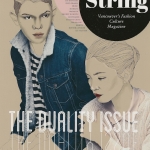
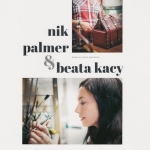
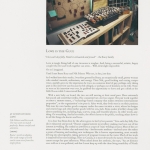

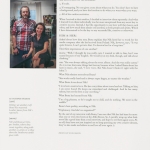


 INSTAGRAM
INSTAGRAM